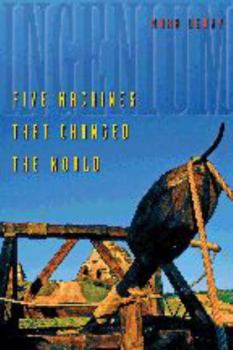Ingenium: Five Machines That Changed the World
Ingenium is medieval English vernacular for "an ingenious contrivance." In this fascinating book, physicist Mark Denny considers five such contrivances--the bow and arrow, the waterwheel, the counterpoise siege engine (including the trebuchet), the pendulum clock anchor escapement, and the centrifugal governor--and demonstrates how they literally changed the world. Interweaving an entertaining narrative with diagrams, equations, and drawings, Denny shares the history of each device, explains the physics behind it, and describes how it was used, how it evolved, and why it is significant in today's world.
Consider the bow and arrow, which transformed warfare by allowing soldiers to attack their enemies at a safe distance. Or the waterwheel, which enabled Old World civilizations to grind grain, pump water, and power machines during a period of extreme labor shortages. Medieval warriors engaged in an early form of biological warfare by using the trebuchet to launch dead animals or plague-ridden corpses over enormous fortress walls. The pendulum clock forever enslaved modern humans to the clock by linking the accurate measure of time to the burdens of schedules, deadlines, promptness, and tardiness. And the centrifugal governor gave rise to an entire branch of modern engineering science: feedback control.
Reflecting on the inventors of these ancient machines and the times in which they lived, Denny concludes with thought-provoking observations about inventors, inventiveness, genius, and innovation. Whether you dream of making a better mousetrap or launching pumpkins into the stratosphere, Ingenium will tickle your fancy.






